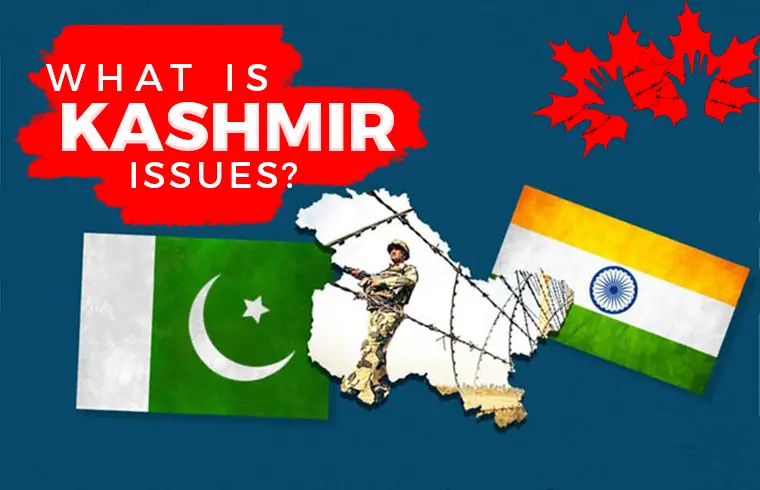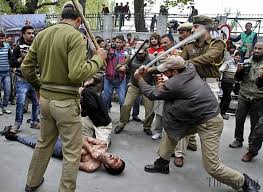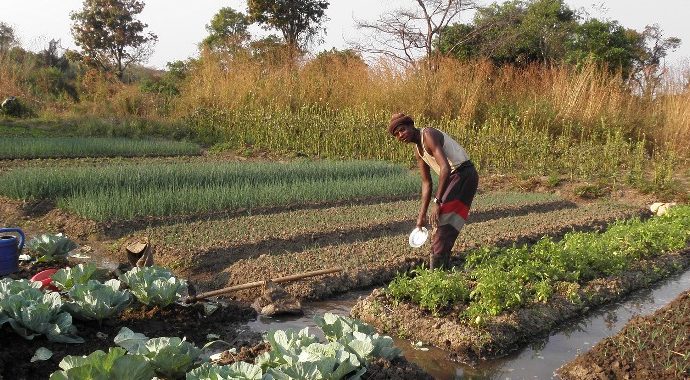
The heavenly beauty of Kashmir valley that’s cradled in the mighty Himalayas and fed with Indus and Satluj in their absolute purity; sharply contrasts with forlorn hope of freedom glimmering in the eyes of Kashmiris for years. The beauteous land of Kashmir is surrounded by two nuclear powers, Pakistan and India, and two other independent states of China-the emerging Superpower- and Afghanistan. The leading tourist attraction has now been labeled as ‘the most dangerous place on earth.’
History of Oppression in Jammu and Kashmir:
Historically, Jammu and Kashmir stayed independent until late 18th Century when Britishers occupied the subcontinent-the territory of India, Pakistan and Bangladesh region at present. Under a Treaty of Amritsar, the British sold Jammu and Kashmir region over to Ghulab Singh for 7.5 million rupees. In 1857, after the demise of Ghulab Singh, Ranbir Singh employed the rules of tyranny and oppression to control the people of Kashmir till 1885. Afterwards, Partab Singh and Hari Singh succeeded him in a row to continue their ways of brutality and repression. Unfortunately, till date, the fertile lands of Kashmir bleed not green but red.
Years before the partition of Sub-continent, Muslim-majority state of Kashmir had been long struggling and fiercely fighting for their rights to self-determination and independence. In 1931, the mass revolt of people against the Hindu ruler was brutally dealt with by the Maharaja.
In 1932, a political party of Kashmiris was formed by Sheikh Abdullah, named as, an ‘All Jammu & Kashmir Muslim Conference‘. The outcomes were positive when the state ruler allowed Kashmiri’s access to the Legislative Assembly. Still, the unrest remained an eternity against the Maharaja Hari Singh.
Muslims of Kashmir wanted to join Pakistan but their tyrannical Hindu Maharaja remained reluctant due to Indian pressure. The acts of repression of Maharaja towards Muslims, and his ordering of Muslims to surrender their arms aggravated the situation by the eruption of a communal rebellion in July 1947. Consequently, the inhuman acts of ethnic cleansing initiated in the province of Jammu before partition. Thousands of Muslims were massacred by Sikhs and Hindus who had connivance of Army and Police of Maharaja. Kashmiris revolted for years against the injustice and dishonesty shown by Hindu rulers but to no avail.
Indo-Pak Partition in 1947:
On 25th July 1947, Lord Mountbatten emphasized on the independence of states to decide upon their future dominion where ‘the rules were technically at liberty to link with either of the dominion (India or Pakistan).’ The 362 princely states of sub-continent were given the opportunity to freely accede to either state of Pakistan or India, or choose sovereignty. However, they were allowed to accede to a contiguous territory and prioritize communal interests of their state based on the majority population.
On 15th August, 1947, only 10 princely states out of 362 decided to join Pakistan. However, a dispute over three princely states emerged, namely Junagarh, Hyderabad and Jammu and Kashmir.
Junagarh had Muslim ruler and Hindu-majority population, yet, independently it showed accession to Pakistan. India critiqued Pakistan for accepting a Hindu-majority state into it and deployed troops in Junagarh to pressurize its people. To date, the issue remains pending and unresolved before the Security Council.
Hyderabad, with Hindu-majority population and a Muslim ruler, got a ‘Standstill Agreement’ signed with India to stay independent. But, India continued to pressurize Hyderabad diversely and finally annexed it militarily on 13th September 1948. Based on their ‘Hindu-majority’ population, India laid its claims on Hyderabad and Junagarh.
However, contrarily, the princely state of Jammu and Kashmir was not put to pre-defined rules of contiguous lands and communal interests. Despite a Muslim-majority population and revolts for the independence of Kashmiris, India laid its claims on the territory through oppression and military intervention.
With a Muslim-majority land, Kashmiris demanded from the Hindu Maharaja the freedom of right to accede to Pakistan. Consequently, Janak Singh, the prime minister of Jammu and Kashmir, put forth a ‘Standstill Agreement’ to both India and Pakistan. Pakistan signed the proposition, but India delayed the decisions in contrast to those concerned with Hyderabad.
The Muslim population of Kashmir rebelled against Maharaja for deferring their decision to independence and for his oppressive acts. He fled to Srinagar, on 26th October 1947, and appealed Indian forces to assist him. Indian troops infiltrated the state under the pretext of the threat to the life of the ruler by people.
Moreover, under Indian pressure, Maharaja Hari Singh showed agreement for joining India after signing an Instrument of Accession on 26th October, 1947-as claims India. An expert in International Law, Dr. Ijaz Hussain refers to article 49 of Vienna Convention on the Law of Treaties that states, ‘A treaty is invalid if its conclusion is procured by the threat or use of force in violation of the principles of the Charter of the United Nations.’
The first Governor General of India, Lord Mountbatten, in his letter of acceptance of accession, clearly promised the Maharaja that the state of Kashmir is being accepted in the Indian Union till an impartial and free plebiscite is held there. However, India obstructed the way to hold a fair plebiscite in Kashmir since partition.
Lord Mountbatten, the first Governor General of India, asserted the conduction of impartial plebiscite after the restoration of peace and order in Kashmir and accepted the Instrument of Accession temporarily. Mountbatten addressed the Kashmir Maharaja that, ‘…it is my Government’s wish that as soon as law and order have been restored in Kashmir and her soil cleared of the invader, the question of State’s accession should be settled by the reference to the people.’
Indian Prime Ministers, afterward, kept on making shallow promises of attempting to create peace in Kashmir before conducting a referendum in Indian occupied territory of Jammu and Kasmir. In 1948, when Kashmir issue was debated before United Nations, India reiterated the same commitment of accession of people of Kashmir according to their wishes.
On the other hand, Prime Minister of India, Jawahar Lal Nehru once expressed, ‘Kashmir, because of her geographical position, with her frontiers marching with three countries, namely, the Soviet Union, China and Afghanistan, is intimately connected with the security and international contacts of India.’
Indians were of the opinion, since partition, that Pakistan cannot stabilize itself for long and its independence will not be prolonged, with India securing a strategic edge over Pakistan. Due to the strategic importance of Kashmir valley, India occupied two-third of Jammu and Kashmir, while, Pakistan maintains dominion over one-third of the land, with a line of control (LoC)-recognized by the UN- separating them.
Through Indian occupation of Gurdaspur and Batala, the Muslim-majority tehsils, via Radcliffe award; India got an easy access to Kashmir valley. In Two Nations and Kashmir, Lord Birdwood observed, ‘It was Radcliffe’s Award to India of the Gurdaspur and Batala tehsils, with Muslim majorities, which rendered possible the maintenance of an Indian force at Jammu, based on Pathankot as railhead, and which enabled India to consolidate her defences southwards all the way from Uri to Pakistan border.’ Unfortunately, the conspiracy was brought to light after the demise of British Rule, which left the unending Kashmir dispute between two rival nuclear powers.
The letter of Indian representative to UN on 1st January 1948 portrayed an inverted picture of Kashmir issue. India incepted a novel strategy of presenting Pakistan as threatening the life and property of people of Kashmir and that it was imperative for India to decide the fate of Jammu and Kashmir. To the Security Council, India pretended to appeal to Pakistan to halt military and civil intervention in the state of Jammu and Kashmir and to desist from supporting Kashmiri freedom fighters. An in-depth research of Alastair Lamb reveals that Pukhtun tribesmen crossed Kashmir border after the invitation by internal elements through Domel in October 1947. It was not a forced entrance into Kashmir region but one granted by anonymous officials.
India failed to convince United Nations of the ‘aggressions’ of Pakistan as UN terms vividly demanded the self-determination of people of Jammu and Kashmir. The Security Council via Resolution 39 laid the foundations of a commission on 20th January 1948 named as United Nations Commission on India and Pakistan (UNICEP). UNICEP was founded on the grounds to explore and investigate the facts based on the Article 34 of the Charter of the United Nations.
Instantaneously, India changed its designs entirely from employing illegal and unconstitutional means of incorporating Jammu and Kashmir in the Indian Union to adopting friendly relations with Kashmiris. In 1950, India granted an autonomous status to Jammu and Kashmir under Article 370 of Indian Constitution. In accordance with the said Article, the state is autonomous except the three rights of regulations of defense, communications and external affairs-to be controlled by Indian Parliament solely. The Kashmir state enjoyed complete authority on its laws and regulations and other administrative functions, but it was a temporary settlement by India only to convince Kashmiris to accede to join the Indian Union.
Kashmir breathed the air of freedom after years with its flag, judiciary, constitution, and government. India went as far to exile Maharaja in June 1949 and incorporated his son as Regent. The National Conference was handed over to Sheikh Abdullah to run the administration of the State smoothly.
In 1950, the National Conference assembled its separate Constituent Assembly for the determination of future of the State. However, in 1951, when India showed interest in the approval of accession of the State to India, Sheikh Abdullah asserted his intention to keep the State autonomous under Indian rule. Later, in July 1952, a ‘Dehli Agreement’ was signed between Nehru and Abdullah where they committed to keeping the special autonomous status of Kashmir intact unless the Kashmir Constituent Assembly decides the oppose it.
It aggravated the Hindus of Kashmir and anti-Abdullah demonstrations were held. Abdullah, reacted, by adopting strict policies against the Hindu protestors and got them all arrested. Indian government showed disapproval and dismissed the authority of Abdullah as Prime Minister in August, 1953. Abdullah faced imprisonment and got replaced by Bakshi Ghulam Mohammad.
India succeeded in turning the tables according to their plans in February, 1954 when Bakshi Ghulam Mohammad confirmed the accession of the State to the Indian Union as legal. In 1954, the president snatched the autonomous functions of Kashmir back to the Indian Government. In January, 1957, Indian Constitution came out as that the ‘State is and shall be an integral part of the Union of India.’
Later on, after Simla Agreement between India and Pakistan on 3rd July, 1972, India asserted that ‘the two countries are resolved to settle differences by peaceful means mutually agreed upon between them.’ But, Simla Agreement, in no way, dissipated the UN insistence on conduction of referendum in the disputed territory of Kashmir.
Through the two major Indo-Pak wars in 1965 and 1971, Pakistan kept its position clear on Kashmir. When armed insurgency erupted in Kashmir, Pakistan assisted the freedom fighters fighting for their rights till 2001.
In 2001, the September 9/11 attacks by al-Qaeda led the U.S. to respond by invading Afghanistan and destroy the safe havens of terrorist groups there. U.S. demanded from Pakistan to join it in its war on terror and Pakistan was left with no option than to accede to it. During US anti-terroristic campaigns, Pakistan’s relations with its neighboring countries of Afghanistan and India became complicated.
In December, 2001, an attack on Indian Parliament further exacerbated the complicated relations of Pakistan with India. India labeled it as ‘Indian 9/11′ and Indian government fully exploited the attack in its benefit by running a campaign of depicting the Kashmir freedom struggle as similar to terrorism. US, however, overlooked the matter while a US diplomat from New Delhi stated that ‘We did not treat it as part of the war on terror’, thus, clarifying the position of Pakistan and US.
Moreover, no jihadist organization took the responsibility of the Parliament attack. India, still, blamed Pakistan for fostering such terroristic forces in its cradle and of providing duress to extremist elements against India called as ‘Difa-e-Pakistan’ in Kashmir. However, President Pervez Musharraf, completely kept back army from interfering with Kashmir issues after 9/11 to maintain the diplomatic relations of two states as well as the peace of Kashmiris.
During the regime of Nawaz Sharif, till date, no progress in Kashmir has been made except settlement of arguments through peaceful measures and diplomatic means. Freedom fighters still revolt against the brutalities of government and fight for their rights and the perpetual war continues to cause great devastation in the beauteous land. Nawaz Sharif predicts the future of Kashmir dispute, quite horrifically, as he once mentioned, “Kashmir might become a nuclear flashpoint and cause of the fourth war between India and Pakistan, so it should be resolved.”
The UN has failed to resolve Kashmir dispute due to resistance of the Indian government. Moreover, terrorism and change in governments have weakened the economy of Pakistan massively. In such critical situation, the US-led war on terror and the hollow threats of the Indian government have left Pakistan in an awkward and tense situation. Kashmir wants independence from the Indian Occupation. It is an unfinished agenda item on the UN’s Security Council table. Who cares?



